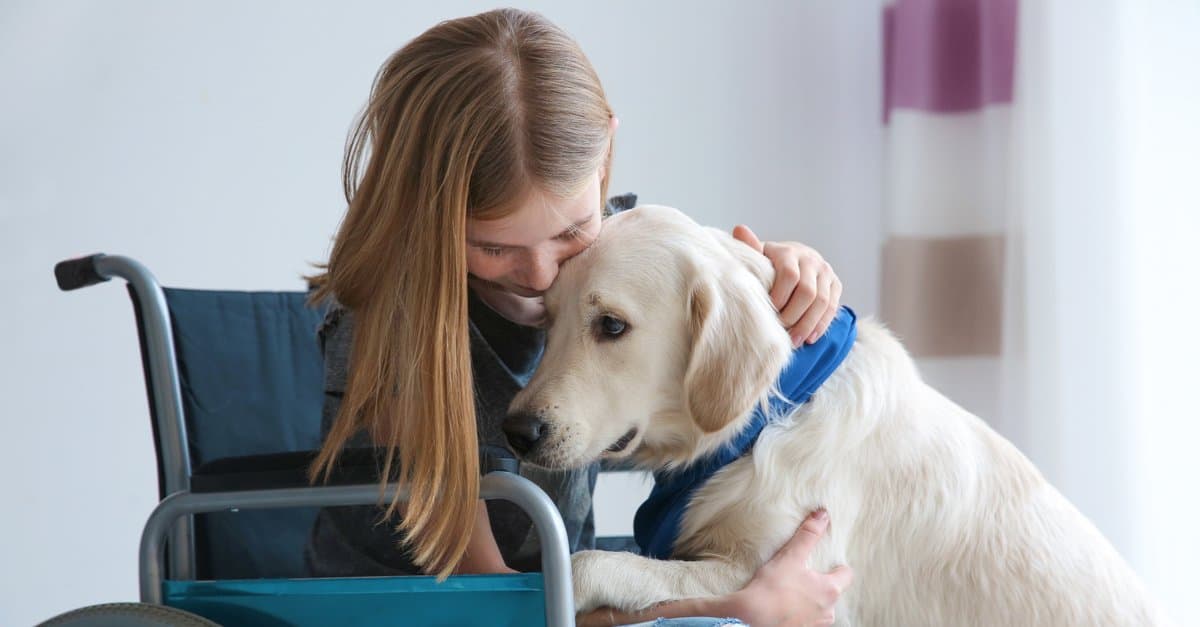Service dogs are valued working partners integral to the lives of millions of Americans with disabilities. They follow commands, perform trained tasks, and provide daily support. With their help, many handlers retain their independence and are kept safe during medical events. If you want to make your dog a service dog, this step-by-step guide will give you the information you need to get started.
What Is a Service Dog?
By definition of the Americans with Disabilities Act (ADA), service dogs are specially trained to complete tasks for individuals with disabilities. With that in mind, The ADA makes a distinction between Emotional Support Animals (ESAs) and psychiatric service dogs. For example, a service dog can be trained to sense a panic attack and lessen the impact for a handler with PTSD. On the other hand, an ESA may provide comfort during a panic attack with their presence but do not actively work to minimize symptoms of the panic attack.
The second biggest difference is that service dogs have full public access rights. This means they can go places where pets are prohibited, such as libraries, restaurants, and public transportation. Knowing the difference will help you start the process of making your dog a service dog.
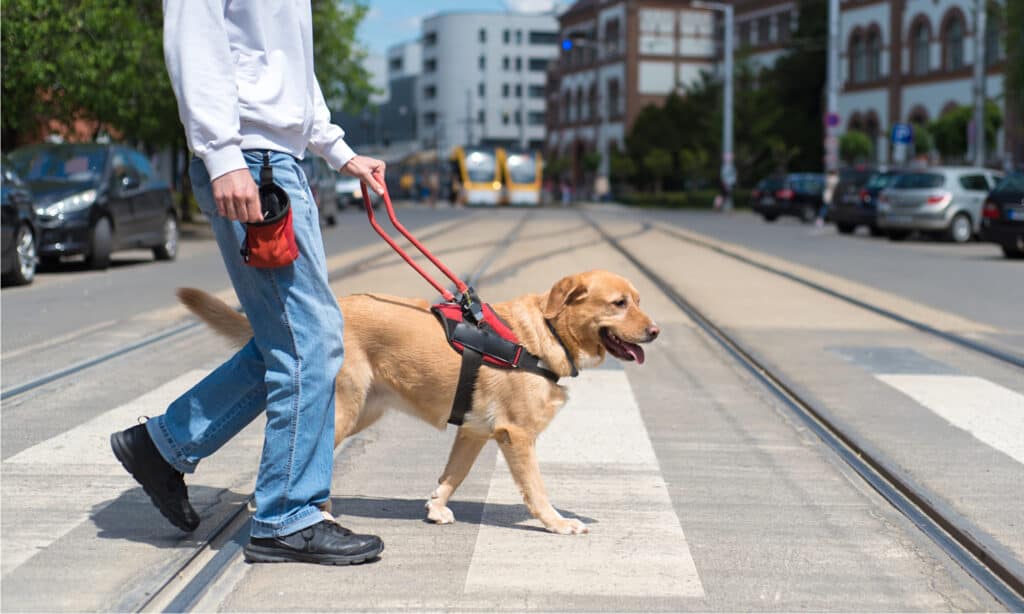
Service dogs can help blind handlers cross the street and navigate their surroundings.
©SasaStock/Shutterstock.com
Making Your Dog a Service Dog
Making your dog a service dog requires time and training. And not all dogs are fit for the role. However, with a goal in mind and a lot of practice, your dog can give you more independence and help mitigate the symptoms of your disability. Below is a comprehensive step-by-step guide on the process.
Step 1: Determine If You Meet the Qualifications
Service dogs undergo training to perform specific tasks for their owners. Under the ADA, you must have a qualifying condition. Your condition can be physical, mental, or intellectual. Some physical disabilities include visual impairment, limited mobility, and hearing loss. However, mental conditions also qualify. Conditions such as anxiety, depression, and PTSD are common. These impairments must substantially limit major life activities. A doctor or licensed mental healthcare practitioner can evaluate you and provide a letter confirming your eligibility.
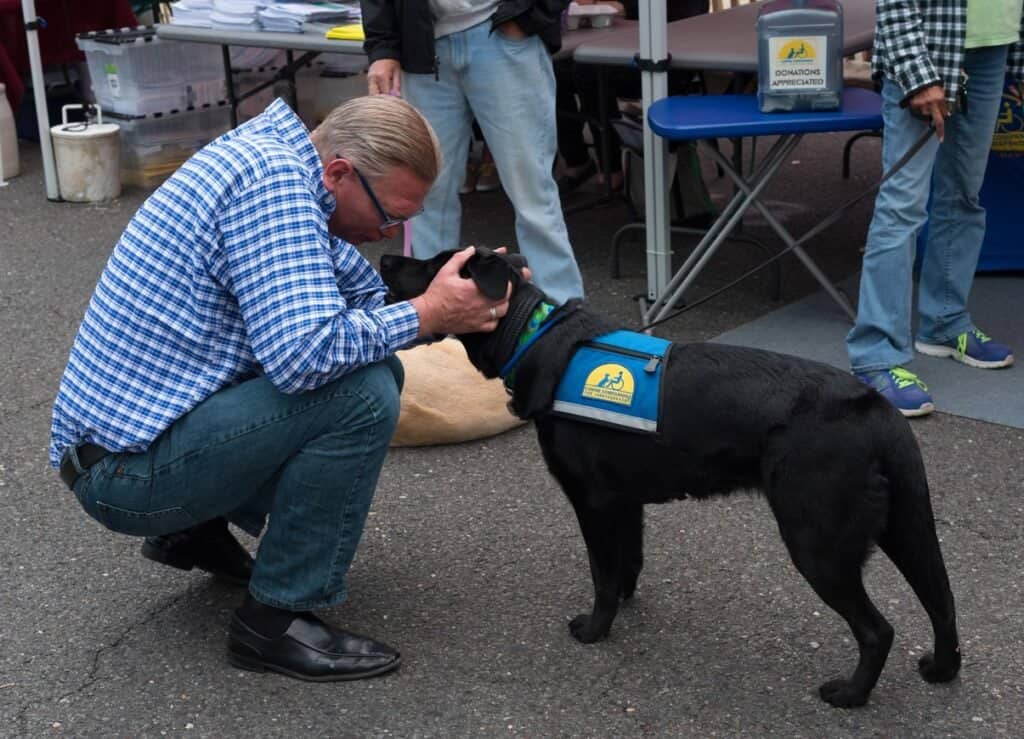
Service dogs can detect changes in human stress levels, making them helpful for handlers with PTSD.
©iStock.com/jfbenning
Step 2: Familiarize Yourself With Legal Requirements and Protections
Every country has different legal requirements. But countries like the United States have laws to protect individuals and their service animals. The United States has the ADA, which prohibits discrimination against people with disabilities in areas including employment and public accommodations. It’s essential to familiarize yourself with national and statewide laws and regulations to maintain your rights. For instance service animals are granted special housing rights and can travel with their handlers on flights.
Step 3: Determine Tasks
One of the most important steps is determining what tasks would benefit you the most. Common tasks include retrieving objects, opening doors, providing stability, and alerting owners to specific symptoms associated with a medical condition. However, their tasks can be unique and tailored to your needs.
Step 4: Assess Your Dog’s Capabilities
Not every dog is suitable for the role. For instance, your chihuahua may not be the best choice for opening doors or fetching items, like medicine, from the table. In this case, you may want to find a larger breed, such as a Labrador retriever, that can more easily accommodate your needs.
Temperament, trainability, and overall health are also important factors determining their capabilities. Moreover, their sociability, obedience, ability to focus, and willingness to learn and work are crucial for their success in helping you.
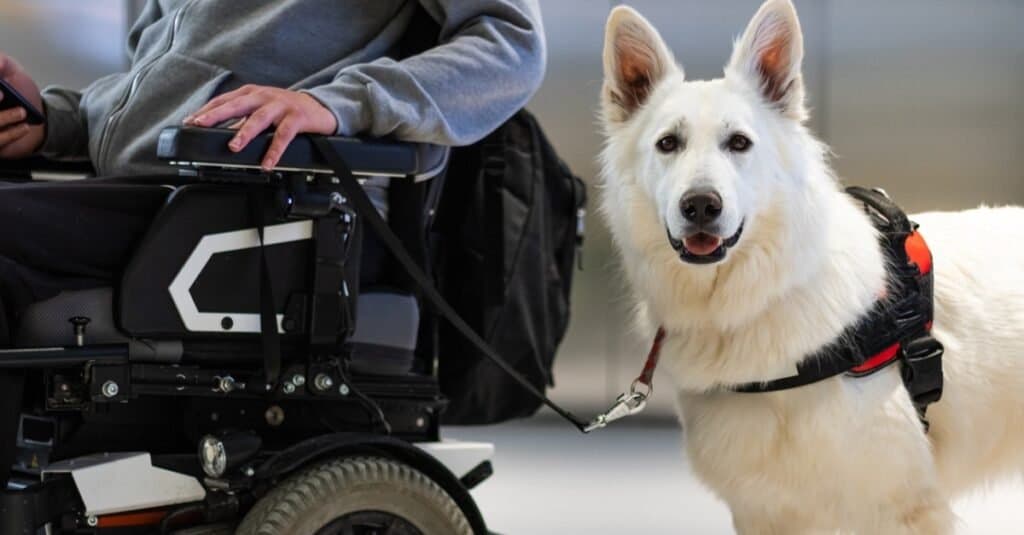
Service dogs can complete a variety of tasks, including providing assistance to wheelchair users.
©24K-Production/Shutterstock.com
Step 5: Training
The ADA does not require handlers to train their service dogs professionally. Individuals have the right to train their dogs themselves without the help of a certified trainer or program. However, you should consider your ability, the costs, accessibility of training resources, and the complexity of the tasks you need help with before making a decision.
Almost any dog can become a service dog, in theory. But before deciding to make your dog a service dog, you should complete some basic training to see how they respond. Service dogs don’t need to complete special training courses or be trained by a professional trainer, but these options are available to those who want it through various certified organizations.
Step 6: Pass a Public Access Test
Public access training is crucial. This type of training teaches your service dog how to behave in public places, including stores, restaurants, and on public transportation. The best way to accomplish public access training is gradually exposing your dog to different environments, distractions, and social situations. You want them to be calm, focused, and obedient in various situations so they can complete trained tasks even with distractions.
The public access test is a voluntary certification. However, it ensures that candidates are calm, undistracted, disciplined, and attentive to their handler, so they are safe to bring in public spaces. But you can test them yourself according to the official test modules.
Dogs trained to attack, use violence to protect their owners, or display aggressive behavior are disqualified from the official test and can’t be considered service dogs. Candidates for the test must have all of their vaccines, complete obedience training, be in good health, and have a stable and positive temperament.
These are the modules of the public access test:
- Vehicle entry
- Leaving a motor vehicle
- Approaching buildings
- Building entry
- Navigating a building
- Leaving a building
- Distance recall
- Sit on command
- Down on command
- Response to noise
- Restaurant manners
- Leash recovery
- Transfer of control
- Team bond
Most certification programs require candidates and their handlers to score 80% or higher when following yes/no commands and reaching “Always” or “Most of the time” qualifications for the overall test.
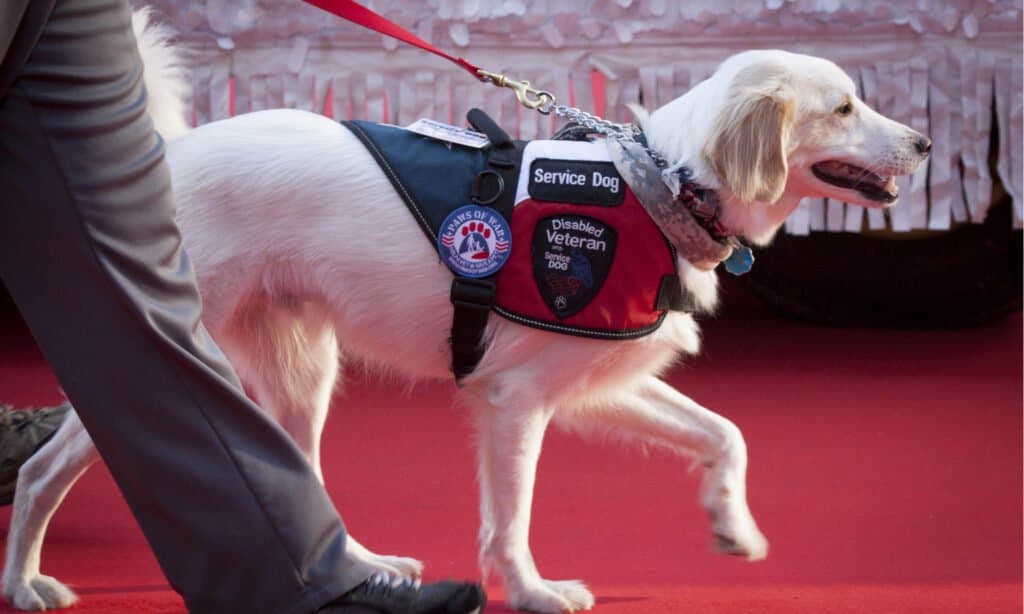
Some service dogs wear a vest with tags to let others know they are working.
©Glynnis Jones/Shutterstock.com
Step 7: Certification and Registration
You may have seen a service dog in public wearing a vest with an identification card and registration number. These are service dog IDs and vests.
It’s important to note that the ADA does not require specific licensing or registration. Having these documents is entirely up to the handler. However, some choose to opt for vests, lanyards, or other forms of visible identification to enter public spaces with minimal hassle. They also indicate to others that your dog is working and should not be bothered.
Unfortunately, not many people are educated on the entitlements or rights of disabled individuals, especially regarding having a service animal in public. Remember that you are not obligated to disclose your disability and cannot be asked to show proof. Business owners can only ask you whether or not they are a service animal and what tasks they are trained to perform.
Furthermore, if you live in the United States and choose to register, there are various places to obtain an ID. You can also obtain a letter from your healthcare professional that verifies your need for a service animal. Certifications and registrations help establish the legitimacy of your service dog, making it easier for you to access public spaces. But keep in mind this step is entirely up to you.
Step 8: Continue Training
Training is an ongoing process that continues after the initial training is complete. Regular practice and adding new skills according to your changing needs helps reinforce previously learned skills and further their capabilities. Practicing will keep your service dog sharp and responsive to ensure you get the needed help.
Ready to discover the top 10 cutest dog breeds in the entire world?
How about the fastest dogs, the largest dogs and those that are -- quite frankly -- just the kindest dogs on the planet? Each day, AZ Animals sends out lists just like this to our thousands of email subscribers. And the best part? It's FREE. Join today by entering your email below.
Thank you for reading! Have some feedback for us? Contact the AZ Animals editorial team.

